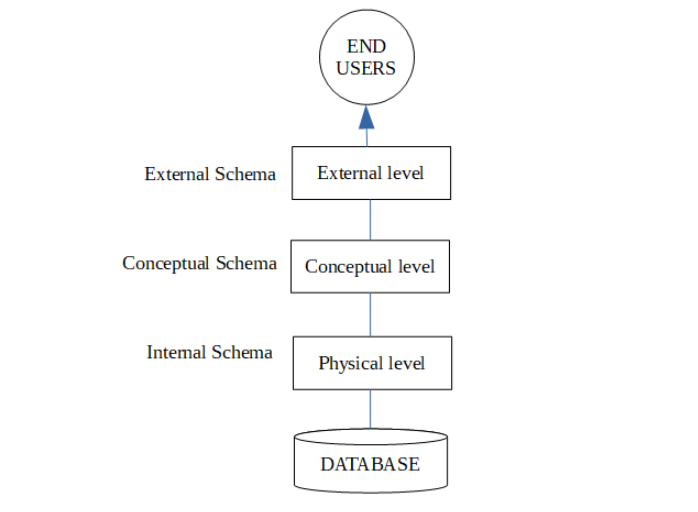
 Data Structure
Data Structure Networking
Networking RDBMS
RDBMS Operating System
Operating System Java
Java MS Excel
MS Excel iOS
iOS HTML
HTML CSS
CSS Android
Android Python
Python C Programming
C Programming C++
C++ C#
C# MongoDB
MongoDB MySQL
MySQL Javascript
Javascript PHP
PHP
- Selected Reading
- UPSC IAS Exams Notes
- Developer's Best Practices
- Questions and Answers
- Effective Resume Writing
- HR Interview Questions
- Computer Glossary
- Who is Who
Three Level Architecture of Database
The ANSI-SPARC database architecture is the basis of most of the modern databases.
The three levels present in this architecture are Physical level, Conceptual level and External level.

The details of these levels are as follows −
Physical Level
This is the lowest level in the three level architecture. It is also known as the internal level. The physical level describes how data is actually stored in the database. In the lowest level, this data is stored in the external hard drives in the form of bits and at a little high level, it can be said that the data is stored in files and folders. The physical level also discusses compression and encryption techniques.
Conceptual Level
The conceptual level is at a higher level than the physical level. It is also known as the logical level. It describes how the database appears to the users conceptually and the relationships between various data tables. The conceptual level does not care for how the data in the database is actually stored.
External Level
This is the highest level in the three level architecture and closest to the user. It is also known as the view level. The external level only shows the relevant database content to the users in the form of views and hides the rest of the data. So different users can see the database as a different view as per their individual requirements.

